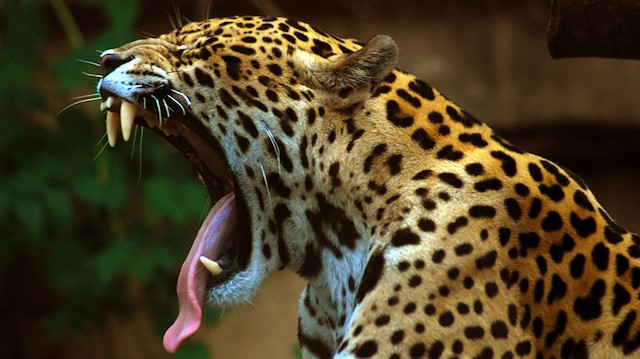
Loss mainly due to unsustainable agricultural, livestock expansion, large-scale infrastructure development
Jaguars, native apex predators in vast parts of the Americas, are being threatened by habitat loss and fragmentation, according to wildlife activists and advocates.
"Jaguar populations are mainly threatened due to habitat loss and fragmentation, decline of their natural prey and poaching or hunting (for trophy hunting or illegal trade) or retaliatory killings," Maria Jose Villanueva, conservation director of World Wildlife Fund (WWF) Mexico, told Anadolu Agency.
Speaking on the occasion of International Jaguar Day, which is observed annually on Nov. 29, Villanueva said jaguars (whose name is derived from the Native American word "yaguar," meaning “he who kills with one leap") have lost approximately 50% of their historic distribution.
"Habitat is mainly lost due to unsustainable agricultural and livestock expansion and unsustainable large-scale infrastructure development," she said, adding this situation leads to increased conflict with humans.
Touching on the wide range of jaguars across the Americas, she said they occupy habitats including tropical and sub-tropical forests, gallery forests, foothills of mountain ranges, wetlands, savannas, dry deciduous forests, mangroves, deserts and semi-desert areas.
"The Amazon portions of the other eight countries that share the biome -- Bolivia, Peru, Ecuador, Colombia, Venezuela, Guyana, Suriname and French Guiana -- have healthy populations of jaguars, and in some cases, high densities," she said, adding that an estimated 50% of jaguars live in Brazil alone.
She went on to say that jaguars as apex predators play a key role in the structure and function of the ecosystems in which they live.
"They are vital for the functioning of animal and plant communities. Given this, jaguars are an umbrella species for conservation, meaning protecting them can serve to protect many other species."
Jaguars can be seen as an indicator of healthy and thriving ecosystems, which can contribute to human welfare as well as support the jaguar itself and many other species.
Citing recent reports from Peru, Belize, Brazil, and Suriname warning that the trade of jaguar parts across the region is growing, she said national surveillance with both regional and international cooperation is needed to protect jaguars, which now number only around 173,000 worldwide, from illegal trade and poaching.
"At the international level, the WWF is promoting large-scale and long-term financing for jaguar conservation and international cooperation to disrupt the jaguar part trade between source, transit and destination countries," she said.
Needed actions must be taken before illegal trade reduces the jaguar population as severely as it did with Asian tigers.
-Illegal jaguar products in demand
"Animal parts and products have been used in cultures around the world for thousands of years, but in recent decades, the market for such products has skyrocketed," Alejandra Goyenechea, senior international counsel at the Defenders of Wildlife organization, told Anadolu Agency.
Speaking on the reasons for poaching and illegal trade of jaguars, she said in Asia especially parts and products of jaguars such as claws, skulls, and teeth are in high demand.
"The parts and products are used for ornamental purposes but are also ingredients in traditional medicines, although there is no scientific evidence for the healing properties of such products," she said.
Calling habitat loss the greatest threat to the global jaguar population, Goyenechea highlighted that this is exacerbated by poaching, which depletes populations and erases the role they play in the ecosystem.
"By removing individuals from the population at such a great scale, we are slowly limiting the genetic code, dealing a further blow to the recovery of the species."
She went on to say that jaguar numbers have declined 20%-25% over the past two decades, and every one of the 34 isolated sub-populations of the predators is endangered or threatened, while 33 sub-populations are considered endangered or critically endangered.
Defenders of wildlife continue to advocate combating the illegal wildlife trade and for increased protection for wildlife on an international scale such as through the Convention on International Trade in Endangered Species of Wild Fauna and Flora (CITES) as well as work to protect habitats so these cats have more room to roam, she added.
Jaguars, a keystone species in Latin America as declared in the Lima Declaration, are also negatively affected by huge fires in the Amazon, which are important habitats of the cats, according to the Jaguar Alliance organization.
"The estimated number of jaguars affected by recent burns throughout the Amazon biome ranges from 400 to 1,500 individuals. These estimates consider the average number of 2.5 to five individuals per 100 km2 of an area in the Amazon," said the group.
Hello, the comments you share on our site are a valuable resource for other users. Please respect other users and different opinions. Do not use rude, offensive, derogatory, or discriminatory language.
The floor is all yours.


